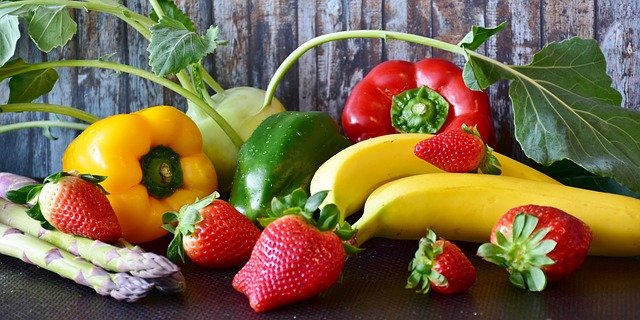
30 Nov Eat a Rainbow – Colour your diet
Keeping healthy is a balance between mind, body and spirit, today we are focusing on the body. Here is some useful information to help guide you when choosing a rainbow of colour for your plate with the help of Prof McWilliams.
Green fruits and vegetables are coloured by natural plant pigment called “chlorophyll.” Some members of the green group, including spinach and other dark leafy greens, green peppers, peas, cucumber and celery, contain lutein. Lutein works with another chemical, zeaxanthin, found in corn, red peppers, oranges, grapes and egg yolks to help keep eyes healthy. Together, these chemicals may help reduce risk of cataracts and age-related macular degeneration, which can lead to blindness if untreated.
The “indoles” in broccoli, cauliflower, cabbage and other cruciferous vegetables may help protect against some types of cancer. Leafy greens such as spinach and broccoli are excellent sources of folate, a B vitamin that helps reduce risk of birth defects and brain fog.
Red fruits and vegetables are coloured by natural plant pigments called “lycopene” or “anthocyanins.” Lycopene in tomatoes, watermelon and pink grapefruit, for example, may help reduce risk of several types of cancer, especially prostate cancer. Lycopene in foods containing cooked tomatoes, such as spaghetti sauce, and a small amount of fat are absorbed better than lycopene from raw tomatoes, believe it not.
Anthocyanins in strawberries, raspberries, red grapes and other fruits and vegetables act as powerful antioxidants that protect cells from damage. Antioxidants are linked with keeping our hearts healthy, too.
Orange/yellow fruits and vegetables are usually coloured by natural plant pigments called “carotenoids.” Beta-carotene in sweet potatoes, pumpkins and carrots is converted to vitamin A, which helps maintain healthy mucous membranes and healthy eyes. Carotenoid-rich foods can help reduce risk of cancer, heart disease and can improve immune system function. Most industrial diet eaters are deficient in vitamin A.
Blue/purple fruits and vegetables are coloured by natural plant pigments called “anthocyanins.” Anthocyanins in blueberries, grapes and raisins act as powerful antioxidants that protect cells from free radical damage. They may help reduce risk of cancer, stroke and heart disease. Studies have shown that eating more blueberries is linked with improved memory function and healthy aging.
White fruits and vegetables are coloured by pigments called “anthoxanthins.” They may contain health-promoting chemicals such as allicin, which help lower cholesterol and blood pressure and reduce the risk of stomach cancer and heart disease. Some members of the white group, such as bananas and potatoes, are also good sources of the mineral potassium, which most industrial dietetic practitioners are deficient in too.

